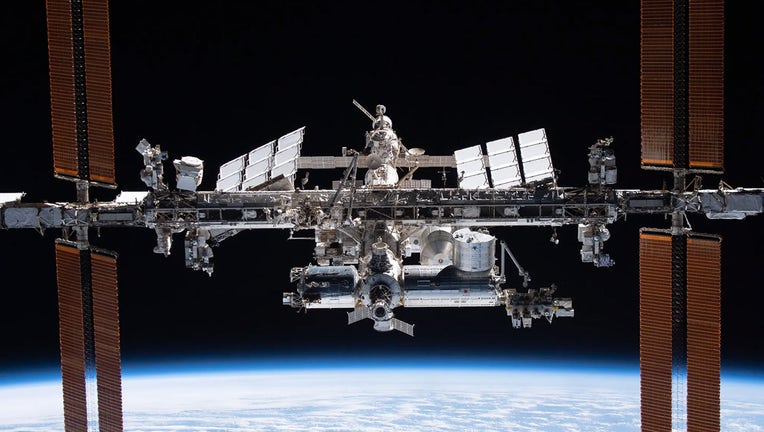NASA investigates whether space station battery crashed through Florida home

The International Space Station, seen from orbit (NASA photo)
NAPLES, Fla. - NASA is investigating whether a piece of space junk re-entered Earth's atmosphere and came crashing through the roof and two stories of a Naples, Florida, home.
On March 8, Alejandro Otero of Naples wrote to Harvard astronomer Jonathan McDowell on social media that a piece of space debris landed in his home. McDowell tracks Earth reentries on his website.
Otero responded to McDowell's post about an International Space Station battery pallet re-entering Earth's atmosphere around March 8. According to McDowell, the item was jettisoned from the space station in 2021.
"Looks like one of those pieces missed Ft Myers and landed in my house in Naples. Tore through the roof and went thru 2 floors. Almost (hit) my son," Otero wrote, sharing photos of the item and the damage to his home.
SCHOOL BUS-SIZED SATELLITE CRASHES INTO EARTH'S ATMOSPHERE OVER NORTH PACIFIC OCEAN
Otero told WINK News the item was about 2 pounds and left a hole in his roof and ceiling before ripping through the second-story floor.
A NASA spokesperson told FOX Weather that the space agency has the object for analysis.
"NASA collected an item in cooperation with the homeowner, and will analyze the object at NASA’s Kennedy Space Center in Florida as soon as possible to determine its origin. More information will be available once the analysis is complete," the NASA statement read.
Space parts frequently re-enter Earth's atmosphere, but they rarely cause damage to a home or human. When a European Space Agency Earth-observing satellite came down in February, the ESA said the chance was about one in 1.5 billion that someone would be hit.
Earlier this week, a Chinese orbital module was seen lighting up the sky off the coast of California. Before re-entry to Earth, the space junk had been in orbit since 2022.
"The Florida incident reinforces that we should be phasing out permitting of uncontrolled reentries of all but the smallest orbital objects. Say, everything above 1000 kg (2,200 pounds)," McDowell wrote on X.
NASA, the ESA and other international aerospace community members have guidelines to reduce dead satellites and rocket parts in low-Earth orbit by requiring post-mission disposal of natural decay or a controlled entry.

